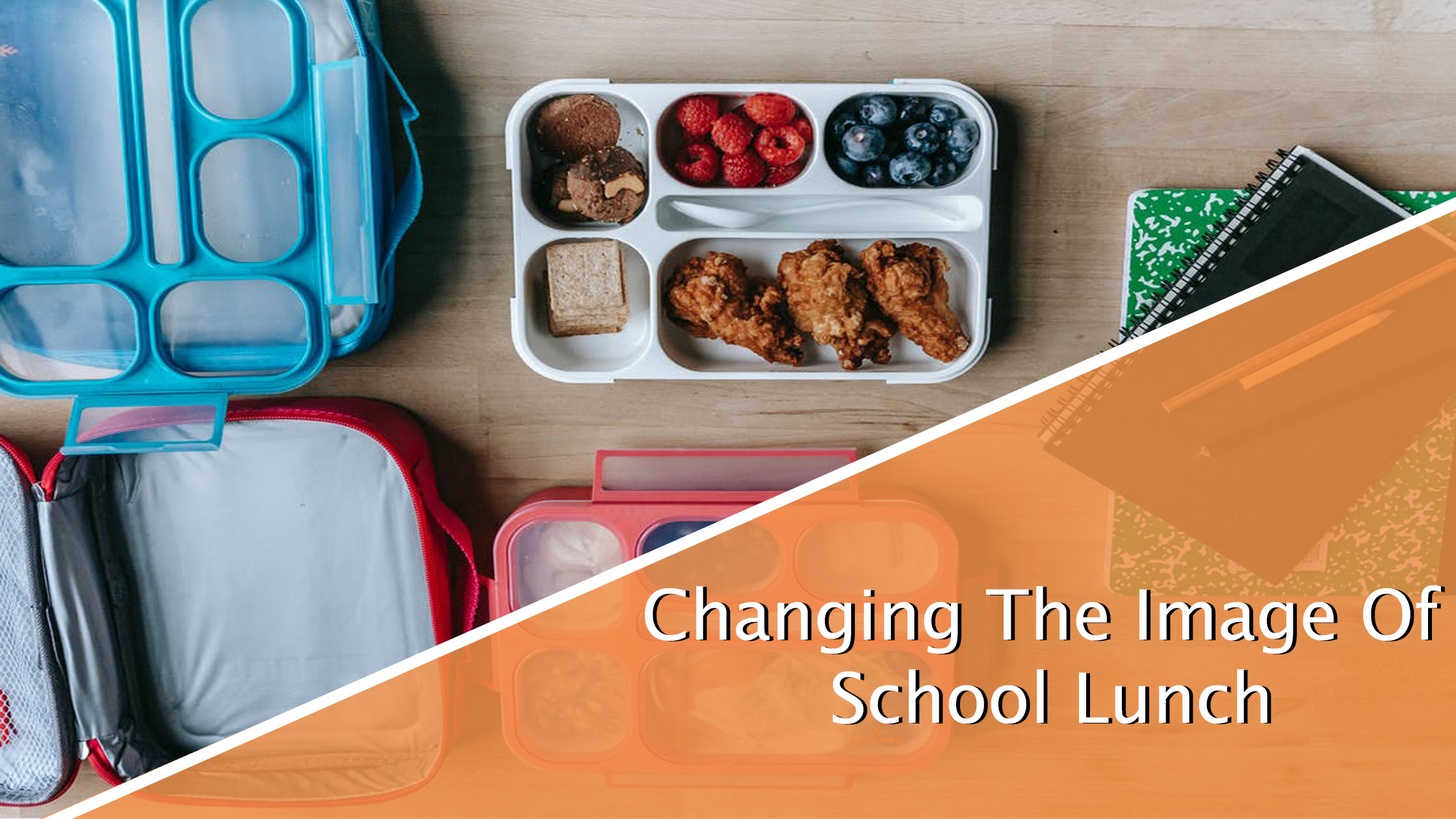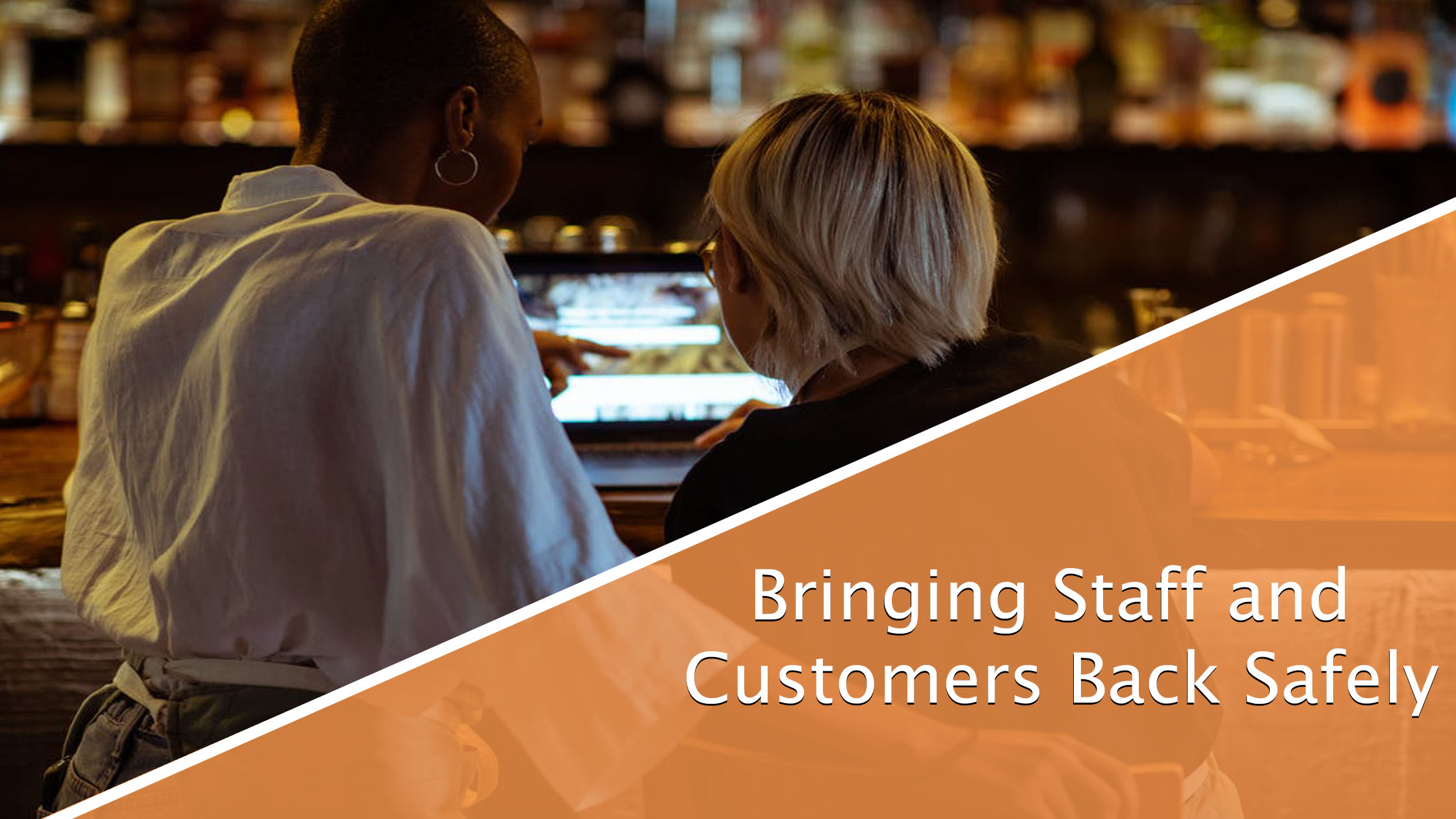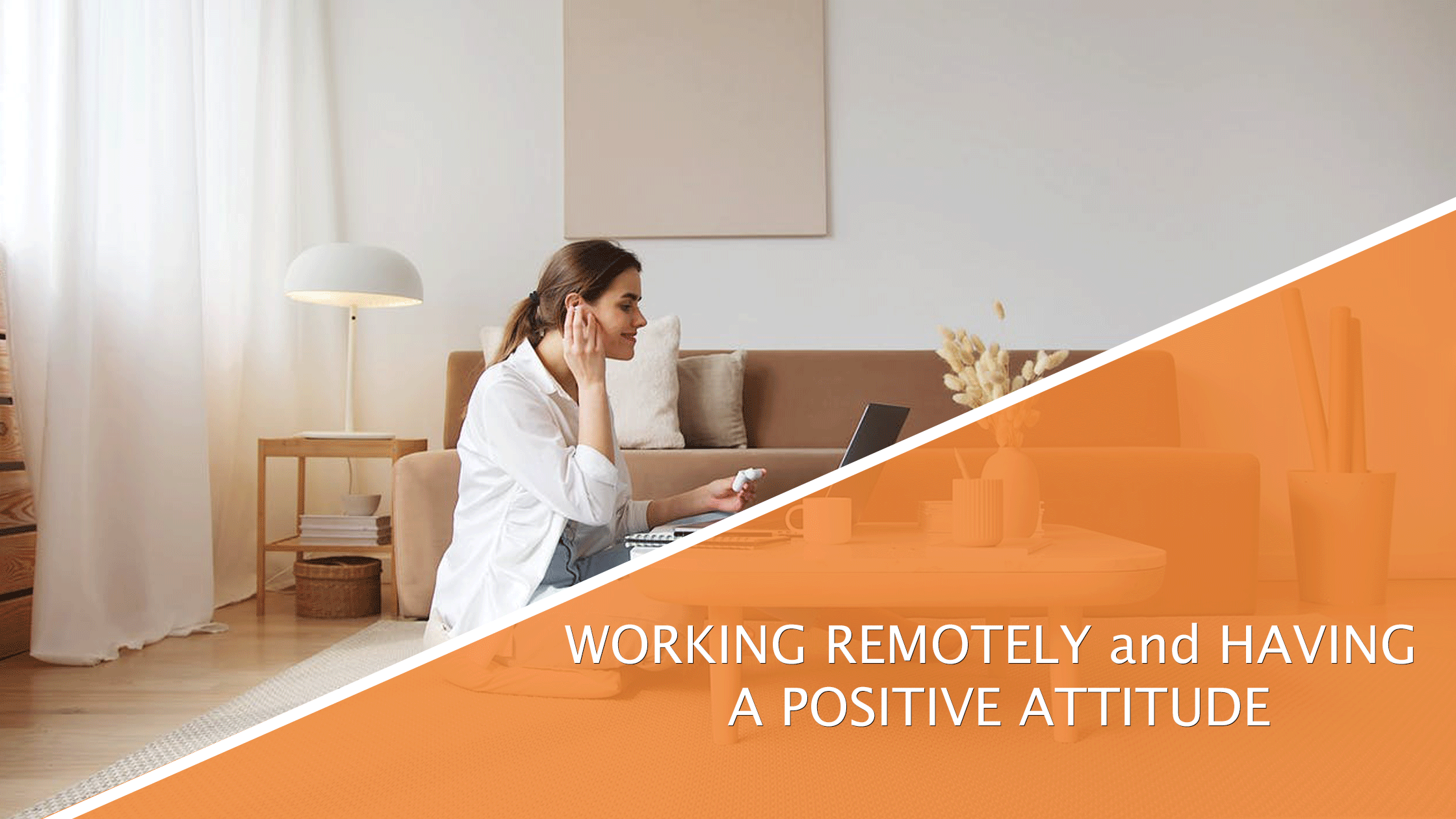School Nutrition Education Program
Change, Challenge and Mental Health
USDA Professional Standards Code- 3450/4120/3430
Guests:
● Bart Christian- Nationally recognized School Nutrition Speaker
● Dr. Ericka Goodwin- CEO of Goodwin Wellness Enterprises & Goodwin Medical Associates
In your practice with working with children primarily, what’s been going on with the pandemic inCovid-19 that affects the children from your perspective, in what you’ve seen?
Well, there’s so many layers that I’m so glad that you all decided to have me come, and I feel like we could probably do this show in like five episodes, because there’s literally so much going on when you unpack everything.
● But one of the biggest things is number one, just as adults have dealt with losses and change due to Covid-19, so having young people, it’s a lot of change. They’re still dealing with a lot of uncertainty as you all are kind of dealing with schools from other ends.
● Month to month or quarter to quarter, no one’s quite sure. Are they going to be there or are
they going to be virtual? Are they hybriding? Those things are constantly in flux then for the
children that have already gone to school that they’re used to that in-school experience, which is not going to be the same with virtual.
● Just the fact that their schedules are so different, and for some of these children depending on who was in their neighborhood, if they’re in a bubble or anything together that was their social time. So, they’ve lost a lot of the time where they’ve been able to interact with peers of similar age and young people, especially when you look at younger children. So, teenagers have a pretty good sense of time, but like those younger children, I’m sure if you have kids, you know how sometimes 10 minutes for them seems like literally forever.
● So, when they left school, a lot of these children went home to virtually learn in the spring.
When they left, they had no idea that they wouldn’t see their friends or their favorite teacher for so long. And for a lot of them, they don’t know when they’ll see it, and for us, we still, as adults, have some sense of time. These younger people, they just don’t. So, there’s also that stress of not being able to spend as much time with their friends. They’re not doing those play dates they used to do. They’re dealing with learning in different ways and all children are not going to necessarily thrive in virtual learning. That may not be the ideal modality for them.
● And then just dealing with the stress of there is a pandemic. So, children do have some sense that something’s wrong and you have to explain to them by wearing masks, so they know there’s something out there they can catch. So, they’re spheres around that.
Have you noticed anything as far as development in young kids and kind of that pace at which they normally progress, is that in your experience slowed down at all, and if so, what are some things that parents can do at home to really keep their kids engaged, whether they’re doing hybrid type learning, where they’re in at home, half the day and then maybe an in class half the day, or maybe it’s all remote for the time being. What are some things that parents can do to really keep their kids engaged and continuing on that development track?
Well, I think you bring up a huge point, because there are a lot of dynamics here, because you have families where either the response work responsibilities are so high or they’re still working outside the home where you have people making this decision or whether or not, especially for these younger kids, these little munchkins that would normally be in daycare or Montessori are going to be home, where there are some that are home because there is no other option. There’s some that are out because their parents still have to work and there’s no other home childcare.
● But I do think one of the things that is challenging is just as parents, parents around to be parents. Parents were not specifically educated on how to be a substitute in Montessori daycare. It’s just a very different role.
● And I think one of the biggest challenges really is from the social aspect, that there is typically a significant social construct that comes with daycare, Montessori, preschool, and those kinds of things, which are not necessarily the same. And right now, even if you’re home with your children, the average adult is not like they’re home and they’re singular focus for the entire day, it’s just working on their child’s development.
● The average adult is still either working from home or trying to find another job because they lost a job. It’s just a little bit different than when you have trained personnel that their only thing is to work with your child and your child’s development.
● So, I think the challenge is really trying to find what are some educational or developmental activities you can do at home. What are some ways to still have significant social interactions with them, even if like for two-year-olds is a little bit more complicated as far as doing some virtual play dates and those kinds of things, but it’s still kind of a theory on ways to still keep them engaged, to still do things with them. Not necessarily get tired and just park them in front of the TV all day or with different devices and find ways in real time, still interact with them.
● One of the things I tell people is there’ve been people that have been doing this home-based
learning and things like that for years. And instead of trying to reinvent every single wheel, we have the internet. I don’t tell my age, but I assume we all at least of a certain age remember when there was no internet, when the only way you’re going to find something is go through the card catalog and grab a book, and right now there’s so much information out here. This is one of those times social media comes in handy.
● There are a lot of social media groups that are parents that have been homeschooling or are
doing developmental things at home that you can tap into these resources that people have
already done when this is your first time. So, I would say one of the biggest things is to continue to stay engaged with your children and look for new things to do with them, so that they’re not necessarily four, but they are also significantly stimulated.
How has technology really changed the way that children interact with their friends and families?
Well, I think this is kind of exploiting something that was a potential weakness that was there before, because as you’re mentioning gaze with those pixels, when I was young, the game that came out with Palm, and it was that one line that went up and it’s just very different.
● I think it just brings to light the importance of, number one, I’m a big fan of monitoring children’s screen time. I’m not a huge fan of children going off being on tablets, computers, and video games, unmonitored all the time, because there are so many different components to them, especially with how they’ve done video games now, because when we were doing video games
where you’re younger, you weren’t chatting on a video game. The only question you were
playing with a video game with was, whoever was in the room with you, because there wasn’t an
internet. So now, they’re connecting people.
● On one hand, you want your child to still learn critical thinking skills to have social skills, know how to actually interact with people and have tactile experiences and other things other than everything revolving around a screen.
● I know it’s difficult in this environment because children typically are a little bit more
homebound than they were before. You’ve lost a lot of the activities that they were doing due to social distancing, and it’s just such a new world. Even going outside is just a little bit different than it was before. Then you add that a lot of times, as we were talking about before, parents may be working from home at the same time, or there are multiple people doing virtual learning and they can’t be with one child all the time. There is a temptation for kids to have more screen time. It translates similarly to how it still happens now, but especially when a lot of us were younger, instead of it being video games, people spent time with the TV.
● And I think it’s important to not let all these things that they can do on a screen, become
surrogates for how to use time. I think it’s important to still seek out activities that use their imagination. I’m a big fan of reading. Just have a variety of activities from them, helping you cook or prepare meals. Just a lot of things rather than being screen-based. Number one, all of that, like can be overstimulating and impact your sleep, but also there’s just so much, because we started this conversation, I’ll talk about video games, but if you will look at what these young people are doing on their screens. It’s everything from YouTube to watching other kinds of videos to social media. It’s just a lot of information, so beyond just the fact that they need social skills and how to interact with people real time, that’s not texting shorthand and just single-handedly destroying the English language, which is a whole another tangent about how people don’t know how to make full sentences with full words anymore. It’s important because you don’t want them to have unlimited exposure to too much information and be overstimulated, because there’s just so much information on the web.
● Now the one flip side, and I realized I’ve been talking literally forever, is that for some of the video games, when they have headsets, one of the things I’ve noticed is some of the boys don’t feel socially isolated, just because of that particular activity. Girls still do it, but significantly more boys than girls do. Some of them don’t feel as socially isolated, because when they’re gaming, they’re hanging out with their friends or having conversations or talking to their friends. So, they’re still hanging out with their friends like they’ve worked before.
● The thing that is interesting for people to have girls and boys or one child that is video games and one that is not is, it’s a lot more intentional to help the other ones still have peer interactions. The ones that play games, especially the ones with headsets, they’re still chatting and hanging out with their friends because they do it over the game.
What type of tips or structure could you offer to them as a guideline for what is an appropriate amount of screen time and how would they potentially limit that screen time for kids if they do have to leave the house and work, in an office or be out in the field for instance?
Well, the great thing is with a lot of social media devices, there are so many facts and ways to know what someone is doing, which is excellent because it’s probably how I grew up, as my mother said, nothing’s private, nothing was mine if it’s in her house.
● So, I probably also said that children and young people need to be monitored, but some of the main tips is, I realized it’s a little bit more complicated when you aren’t home and they’re home.
● One way to help deal with things when they’re home and you’re not home, is giving them other
tasks or other things to do. It’s virtually limiting their free time, like kids need a schedule. So one of the things that I think is helpful regardless, is to actually have a schedule and schedule everything kind of like you would do if you’re a busy business person, it helps draw like boundaries. It also helps people have some level of certainty, because things become predictable because you have a schedule, and then you start scheduling in, when is the screen time? When should they actually be reading a book or playing a game? And when their meals are kind of, what’s going on for the day when it’s family time.
● I think the other thing is there are ways to occupy your children where you’re actually engaging with them. It ends up making for a more rewarding experience.
● One of the things I think is important right now is to make memories together. So this doesn’t feel like it’s the last year and nothing good happened this year. We can still have quality time and make positive memories.
● But the short version is, I think it’s important to have a schedule. The next thing is it’s important to have limits to not say, “Oh, just get on it whenever for whatever.” Maybe you do an hour here, an hour there, instead of it just being well, anytime when we aren’t doing something together, you can be on the skinny side, and you can be on whatever it is just religiously.
● I think it’s important to start by setting some limits. I’ve been a fan for about an hour or so. Sometimes it gets a little longer, but the other thing is just kind of having an idea of what your children are doing, most of the cell phones now. You can pull out almost at least there with their cell phones and tablets and know how much screen time they’ve had for a week, and I think that’s good to know, so you know what your baseline is, and then start working back from there.
● But the main thing is just not having all of this unsupervised time, because there’s so much
information out there, there’s so much going on in the world right now. Just think of how it is as an adult, when you’re even looking down your social media feed and all this stuff is coming in from what’s going on with racial injustice, to what’s going on with Covid to elections, to everything and how much discernment it takes as an adult to figure out what is appropriate information, what is fact-based information, or what is it going to make you emotionally overloaded?
● So, by people being totally unsupervised, it’s very easy for them to become overstimulated,
because there’s just so much information out there, and some of it quite, frankly, is just not
appropriate for the children.
Any tips you got, because I’ve heard that from several parents that their kids’ grades decline and they are doing what they’re supposed to do, but they’re just not comprehending the information like they did before?
Well, you’re bringing up a humongous point Bart, which is that virtual school is not for everyone. To be honest, the way we’re doing virtual school is still different from the curriculum they were doing in traditional homeschooling, so it’s a very different environment. And the other thing is, all this stuff is not happening in a vacuum. So, these children are still trying to deal with emotionally regulating themselves in this new environment that can change so frequently while managing virtual school, especially depending on how a child learns that this may not play to what their strengths are. Sitting in front of a computer for hours on end, some children just aren’t going to do well with it, because it’s difficult as
adults. Most of us don’t like doing it, but we do because we know we have to, but it’s just hard.
● I think some of it deals with learning styles. Another is, some of these children are really aching for the social component of in-person school. That just isn’t the same in this virtual learning environment, it’s just very different.
● The other thing is that quite frankly, and I’ve talked to a lot of parents, it’s when their kids are in virtual schooling, especially these younger kids. It’s like they’re being held hostage too. They have to sit there with the kid, it’s just stressful. So, I think part of it is, on one hand, it’s the learning house, a child learns. It’s just very different, getting it this way, then they’re missing that social component, just the stress of kind of managing it because it’s a lot going on.
● There are times, especially if you have family, you have multiple children that everyone’s just trying to figure out where their spot is, because a lot of people’s homes. There are people that are in higher socioeconomic status that may have multiple children. Everyone has their own room; they have enough computers for everyone to have the same computer. Everyone has good internet access, but there are a lot of families that’s not the case.
● So, instead of being three kids and a mom, I’ll let the kitchen table with laptops out three or in different classrooms and the other, the parents trying to watch them and work, so it’s just a different immersive experience.
● For some of the kids that they’re just emotionally dysregulated, because everything just feels so foreign or difficult. I’d say the first tip is to be patient and have grace for yourself as an adult and grace for your child, that they’re trying to learn something new, especially if they’re not like a kindergartner. They have learned that school happens a certain type of way and they’re used to school being that way.
● So, adjusting to this new way is very different and it’s also giving grace to the teachers, because most of them never taught in this format. So, it’s a learning experience for them to learn how to teach effectively and keep these children engaged in this format.
● The other thing is, these kids aren’t getting exactly the same lessons, the same way as they were getting before. So, part of it is just being patient. These schools have a lot of resources, but a lot of times these people aren’t going into the school, they don’t tap the resources. So, make sure you’re checking all better, and we can have those conversations with their teacher too, and possibly problem solve to see if there’s some other ways to supplement the information in a way that they’re going to actually retain it better.
What are just a few things that a parent can be on the lookout for, to see if there is a significant mood change or are depression occurring in their kids, maybe two or three things that they can just really be on the lookout for.
The first thing is, if you have children that are now tantruming and are tantruming a lot, you’ll also see those tantrums around, kids just refusing to do school. And the next thing is, you have a child that previously was more interactive that now doesn’t want to do anything with the family and wants to spend all their time in their room.
The next, if you notice that they’re not really sleeping or they’re having a lot of nightmares, crying all the time. But I know a lot of people think about sadness, but also kids can get really irritable. If you notice that this kid is just yelling a lot or snap at everything. I think that’s also something else huge. It’s just
looking for changes, like changes in sleep, changes in appetite. So, you just look for changes, because you know who your child is, you know when your child is not acting like itself.
How do these mental health issues differ between kids and adults?
Well, one of the first things is, as adults, depending on your emotional intelligence, but usually adults may have better language to describe how they’re feeling, especially when you’re dealing with younger kids. They may not necessarily have all the language to describe how they’re feeling.
I think on that end, it’s a little bit different, and the other thing is, with children, a lot of times you will see even more irritability than frank sadness or the way an adult would describe anxiety. For anybody, any emotion can look like your ability. Sadness can look like irritability. Nervousness looks like irritability, being mad is irritable. But kids are particularly prone to become irritable. To me that’s another difference, but a lot of it is just as they may not be able to talk about all the details as much, which is one
of the reasons that a lot of us that see kids have done things that have to do play, but especially for younger people and even teenagers. Sometimes they’re ready to tell you how they’re feeling, sometimes they’re not. You have to kind of come sideways or distract them, so it’s one of the reasons why a lot of times you can get some information, your color, or your plan with them, or you’re eating, you’re doing something else, because then they’re not totally focused on not telling you what’s going on.
What are some tips that you have for parents, educators, and professionals going back to the
workplace to really decrease that stress and continue with the same productivity that they were putting out before the pandemic?
Well, I think one of the hugest things is just as it’s important for kids, it’s important for adults to have a schedule. As most of us know, I know for me, if it’s not on my calendar, it may not really happen, but it’s important because number one, it lets everyone in the household know exactly what’s going on.
● It also helps you make sure that you do the thing that sometimes will let it go if it wasn’t written down. So, you put everything on there, you put every single person in the household there from when everyone’s in school, work, meals, exercise, if you meditate or do some type of quiet time, family times, bedtime. You’re literally putting everything on there.
● It also makes it so that you will hopefully do those self-care things, because I think one thing that’s been very obvious here is there’s been such a blurring of everything that happens at home. Before the homeless home for a lot of people, there were some people that worked from
home, but even when they worked from home, everybody else wasn’t home with them. Now it’s
just a very different environment, so it’s very easy for everything to kind of blend into each other.
● So, there’s never like this time where you’re done working or you’re totally focused on family, it’s just everything is scattered, and I think one of the reasons it’s important to have a schedule is to kind of start planning, when is family time and when is work time, so that you can set some boundaries between all of it. Otherwise, people end up feeling just run down and exhausted.
● The next thing is, make sure you give yourself some grace, no one is going to be perfect right now. People in general aren’t at their best right now. There’s just so much going on too.
● It’s important to cut yourself some slack and cut other people some slack. All we can do is the best we can do, and a lot of times the solution that worked yesterday or last week, might not even be a solution for the next week because things are changing so quickly. Give yourself that grace and that flexibility.
● I think the next thing is, everyone’s schedule is different, but carve at least five to 20 minutes where you do something that is just free, that it’s not someone else wanted to watch this TV show or do this other activity, and that’s why I put in as little as five minutes, because if you have a busy family, you may not be able to carve lots of time, but you just want a little bit of time that is solely yours. I know people with busy families, because I know there are lots of people with families listening to some people. The only place I can get a little piece of quiet is the bathroom or the closet. If you gotta go there, go there and just have a couple of minutes to yourself, because I think it’s important just to be able to reset.
● If I say something else, and I’m trying to pick out things that you wouldn’t just see on every single list, because everyone talks about drinking water and eating healthy and getting sleep.
● The next thing is that, during this time because things were so changing, you’re going to need to probably go to the table multiple times and renegotiate what the task delineations are in your household, between the adults and even the younger people, because in a lot of families, the kids are old enough to help out with some things around the house. One of the things we’re seeing is that this is taking a huge toll, especially on women, because as the kids end up at home, then they get those tasks alone, everything they were doing before, and it ends up just too much.
● I think it’s important, especially for couples and families to continue to have conversations about how we are going to dig up all these things that need to be done? So, there’s not an unfair load on the front person, so that everyone can actually still be emotionally present because otherwise someone just ends up totally drained and it ends up being, you’ll hear these stories and I’ve had patients and other people talk about it where one, you have two professionals that are together, and then they have all these kids that are virtual schooling, and the mom has virtual schooling. Then the mom’s still trying to work, the mom’s doing everything in the house.
Then the husband does his work on the side, and then he’s working out and living his best life, going to the mountains, chilling out.
● People have to communicate what their needs are. I think it’s really important to kind of look at that again, so that things end up a little bit more active.
One of the things you didn’t mention that I know that is big on your list is that goal setting and making sure that you visualize where you want to go, and I think that’s a big thing too. I think sometimes I talk to some of these people, children, and their whole world has become wrapped up, and like you said, this blurring of the lines of this time that we’re going through and they’ve lost sight of two things, this is going to pass, number one.
● And the second thing is, what are we going to do once this pass? What are the goals we have?
And I don’t want to belabor this because I know we’re at the end of the show, but you have a
thing we’re going to put some links on the show notes.
● One of the things I really encourage people to go check out is your five-day visualization
challenge, because I think that’s such a key thing during this time is to be able to visualize
yourself on the other side of this, and not only be able to see where you’re at, but visualize
where you’re going and where are you going to be?
● In my opinion, I think that what has happened in the past few months has stolen a lot of
people’s visions from them for a short time, or either it’s closed their vision and made it where they can’t really see down the road any longer.
● I just encouraged him to do that, that’s one thing that I really recommend. I know you and I
know how passionate you are about this, so I’m sure that that’s going to be a great program for everybody. Also, go check out your Facebook page, because I love the fact that you built your kind of brand around butterflies and the metamorphosis. That’s really what I think we’re going through right now. I think as a culture in society, we’re going through a metamorphosis. We’re going to emerge on the other side, more beautiful and stronger than we ever have been, but sometimes it’s a little painful and a little ugly when you go through that. I think that’s kind of where we are, I don’t know if you agree with that or not. That’s how it felt about things later.
I agree. I feel like I just need to keep you in my back pocket and just pull you out periodically. I totally agree because this time period, for me, it’s marked by a period that’s been marked by a lot of focus on survival.
● When focusing on literally just surviving, it’s kind of like everyone’s in this perpetual crisis and naturally in the middle of a crisis, you’re focused on how to get through the crisis. You’re not necessarily focused on what happens after the crisis or anything particularly long-term, you’re kind of looking at how do I survive in this moment?
● And I think you’re bringing up a huge point, which is the one that is number one, there are some cognitive and other kinds of tools that can help people feel more grounded, utilize gratitude and other kinds of strategies, so that you can literally emotionally feel better in this season, because as you said, we’ll make it through it.
● It is a season, but I do think it’s important to still have some level of vision or wants or desires outside of survival. I think that’s a principle, a lot of us use a lot of ways. I use it even in my tele-psychiatry practice. When I tell people the goal isn’t to get you to a point where you’re just surviving, it’s to get you to a point where you’re thriving and you’re able to really enjoy your life and I think that’s one of the reasons I put together.
● This challenge was to put a little time and energy into thinking, what kind of things do we want for the rest of the year and through the next year, so that you have this space of not only hope, but also a space of a goals, visions, desires, and things that you can still move towards. So, you don’t feel like all that you have is literally right in front of you.
What are some things that you may use, whether they be tools, books you read, meditation apps you participate with, exercises that you do, just really help stay at the top of your game, mentally sharp and physically prepared and ready for each day?
I have to say one of the things I was blessed to have when all of this started is, I have lots of coaches. So, I think the first thing is, number one, I have not been trying to survive the season on an island by myself.
● One of them is being able to ask for help and utilize resources. I think I have a total of four coaches right now. So, it’s having all of these people that I can kind of pull through to help me figure out the best way to kind of have a mindset.
● I think for me, I also did a lot of mindset work over this period, but I just decided when, Covid hit and I got start hearing everything and as a physician, we’re in all these groups, so you’re in the inside colleague groups getting all the back end information I decided I made a conscious choice at the very beginning that I was going to come out of this better than I went in. Over the first couple of months, I lost about 20 pounds because it finally clicked. I was like, I’m making a conscious decision to do this handful of things. So, one was just having a mindset that I was not going to let this turn my life in the other direction, that even though its adjustments things are different.
● I was doing contract work; I actually lost a bunch of contracts at the beginning. I just made a decision, where I really lost weight just eating very clean, I didn’t buy any junk food. So literally there was no temptation in my house because it didn’t exist in my house.
● I had this Peloton that had been gathering dust. So, I started riding my Peloton five days a week.
That Peloton has been a God sent, and then I went on the road for a while and then it gathered
dust again. And when it started gathering dust again, I realized, staying active is very therapeutic and then I have to start doing some other workouts.
● Exercise has played a huge part. Eating healthy has played a huge part. I meditate daily. I have Calm and Headspace and they’re both good, but I am totally in love with the Peloton app
content, and they have so many great meditations from five minutes to significantly longer ones.
● To me, one of the things that’s made it really easy is that instead of saying, I’m going to meditate for 10, 20, 30 minutes. I do five-minute meditations, not even 10 minutes. I do a five-minute meditation in the morning. If I’m having problems going to sleep, they also have sleep meditations, I’ll do those.
● I’ve done a lot of reading, so I think the other thing is I discovered audio books. I’d always been like, I’m not listening to a book, and I finally tried it and fell in love with it. At one point I was going back and forth between Atlanta and Chattanooga. I started listening to all these books, and one of the books I listened to was hell L-rods the Miracle Morning. I highly recommend it, and when I listened to that, I started actually doing his miracle morning. So now I actually get up at four-thirty in the morning and I do it in the morning and it’s the hallmark of it is something they call SAVERS. So, the S is for silence like gratitude, meditation prayer, A is for affirmations, V is for visualizations, E is for exercise, R is for reading and S is for scribing, journaling or writing because none of those had an S and he needed an S for an acronym. I felt like it just gave me so much more clarity and focus.
● For me, the other end is I kind of threw myself into a lot of self-development, and the other thing is my closest friends. We actually have a standing zoom. I have found ways to still stay socially connected, even though I’ve been rather conservative with dealing with this. My best friend lives in town, we live a couple miles away. I’ve only seen her maybe four times since March. I don’t really do people right now that much, but I’ve just been purposeful about staying connected with people.
Is there anything that you’d like to leave our listeners with and viewers with for this week? Any words of encouragement, final thoughts, recommendations for reading material, anything along those lines?
We’ll do a quick list, recommendations for reading material. There are two that I feel like can be life-changing if you’re open, because that’s the other thing is everyone has these moments where either you’ve read that book and it seems like the greatest thing, or you watched Oprah and you feel so excited, and then nothing happens.
● So, if you’re ready to actually do something and it’s no judgment, because I’ve read plenty of things and didn’t actually do any kind of action. As I do highly recommend the Miracle Morning and the Miracle Equation by How L Ron, there’s also this little booklet that’s like if a pamphlet could be folded, I think it’s 36 pages, it’s called the 80% Approach by Dan Sullivan, and it literally is about how to literally get rid of procrastination. I was a master procrastinator and perfectionist, and it helps you get through it because I think right now, you’re always trying to steal time and the faster you can get through work stuff, the faster you can get back to your family. I feel like that’s what everyone wants to get to. You want to be able to spend time with your friends and your family to have quality time with your loved ones and some quality time with yourself, because you yourself gets to be counted as a loved one. So, the more efficient you are with all that other stuff, the more time you get for all the fun stuff. So, those are my three book recommendations.
● I think we’re all going to get through this with love, grace and hope. What I typically tell people is my prescription is to call at least one person that you love and tell them that you love them. You have to keep calling people till you get one person on the line. It can be audio or video, text. If they don’t answer the phone, it doesn’t count. I think it’s important because number one, it’s important for us to actually tell people how we feel, because no day was promised even before all this happened, but I do think it’s something simple you can do that also helps get people socially engaged with people.
● The other last thing I would say is it’s important to ask for help. If people ask you how you’re doing and you say, fine, people are going to assume you’re fine. You have to be able to let people know that you need help so that they have permission to engage and assist you. I think Bart already mentioned that I’m on social media.











